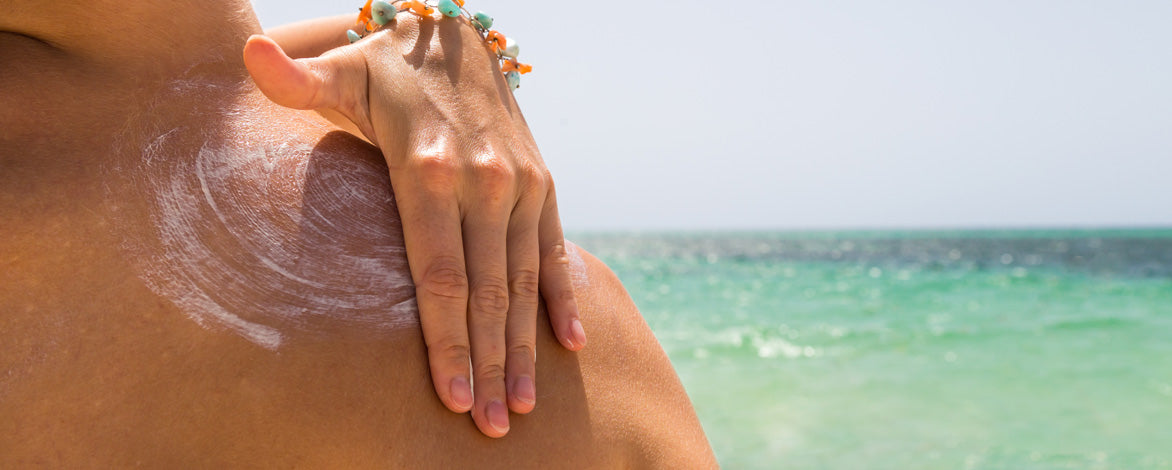Radiant summer skin

Summer smells of strawberries and lavender, shines brightly for up to 7 hours a day and makes seas of flowers glow. It even warms stones to body temperature and caresses sun-kissed faces with a gentle breeze. This time is accompanied by a gentle humming and rustling, it leads us to the elements: We jump into the water, lie down on the grass, on the earth, light barbecues and feel light as a feather. It's summer, it's sunshine time.
The darker side of the sun
Of course, the sun has many positive effects: Sunlight promotes vitamin D production in the body - and vitamin D is good for bones, muscles and the immune system. In addition, light stimulates the release of endorphins, i.e. happiness hormones, while infrared light improves circulation, metabolism and performance.
However, too much sunlight can also be harmful and lead to serious skin damage: premature skin ageing, sun allergies and even skin cancer. It is therefore essential to protect yourself from the negative effects of UVA and UVB rays.
SPF broken down
Depending on the skin type, the sun protection factor is used to calculate the maximum daily exposure time of the sun cream. To do this, simply multiply the sun protection factor by the self-protection time of your skin. If the self-protection time is 10 minutes and you apply sunscreen with SPF 30, you can stay in the sun for 30 times 10 minutes, i.e. five hours.
But be careful: the SPF values on the packaging are based on laboratory tests. However, it is assumed that two milligrams of sunscreen per square centimeter of skin would be used. Most people use much less. The rule of thumb is therefore to apply at least three tablespoons of sun cream, preferably around 20 to 30 minutes before sunbathing.
Natural cosmetic sun cream without unwanted chemicals and microplastics is recommended. It works physically, i.e. mineral UV filters such as titanium oxide and zinc oxide form a protective layer on the skin and reflect the UV rays like tiny mirrors. After sunbathing, the skin should be intensively cared for to counteract the loss of moisture in the skin. After-sun lotions with aloe vera are particularly recommended as they are easy to apply and provide intensive moisture.
No two skins are the same
Every skin needs sun protection - only some need it earlier and with a stronger sun protection factor:Skin type 1:
- Very fair skin, light eyes, light or reddish hair, freckles
- Sunburn: very fast
- Tan: hardly any
- Self-protection of the skin: approx. 10 minutes
Skin type 2:
- Light skin, light eyes, light hair
- Sunburn: fast
- Tanning: slow
- Self-protection of the skin: approx. 20 minutes
Skin type 3:
- Medium-light skin, medium-light eyes, brown hair
- Sunburn: occasionally
- Tan: slow
- Self-protection of the skin: approx. 30 minutes
Skin type 4:
- Dark skin, dark eyes, black hair
- Sunburn: rather rare
- Tan: fast
- Self-protection of the skin: approx. 40 minutes
Skin type 5:
- Dark skin, dark eyes, black hair
- Sunburn: rare
- Tan: fast
- Self-protection of the skin: approx. 60 minutes
Skin type 6:
- Dark skin, dark eyes, black hair
- Sunburn: very rare
- Skin's own protection: approx. 80 minutes
Skin care from the inside
However, the skin not only needs protection from the outside, but also from the inside. This includes a sufficient intake of fluids, about two liters of water or unsweetened teas are perfect. Mint, ginger, orange or lemon slices give the water a fresh taste. Fruit and vegetables such as cucumber or melon have a high water content and are therefore also highly recommended.



